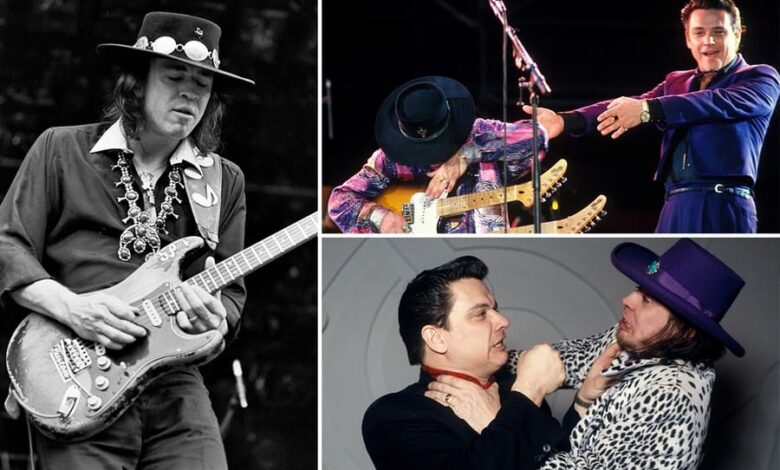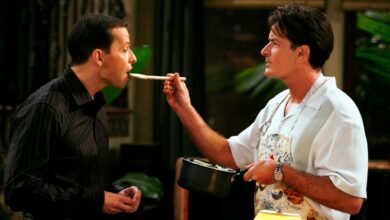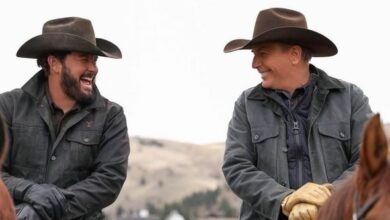Stevie Ray Vaughan Was Back on Track, But One Trip Ended It All

Stevie Ray Vaughan revived blues guitar in his heyday during the 1980s. He was compared to Jimi Hendrix, Otis Rush, and Muddy Waters. From playing guitar as a child to becoming the lead singer for the Texas band Double Trouble, with talent like his, it’s no wonder he started working with David Bowie and Jackson Browne.

Despite his famed struggles with alcohol, Vaughan gave the impression that he was finally back on track and “in step,” just like the title of his last album. The 1989 album, In Step, earned him a Grammy. But sadly, it turned out to be the last album he would make (non-posthumously). Vaughan’s musical career and life were cut short in 1990 by a tragic helicopter accident. He was just 35. What’s worse is that the crash has since proven to have been preventable.
This is his story.
Enter Stevie Ray Vaughan
As the 1970s ended and a new decade began, different genres of music like techno-pop, punk, glam rock, and disco were starting to replace the classic rock bands, especially their lead guitar players. For a while, it seemed like it just wasn’t cool anymore to be the frontman of a rock group. But then Stevie Ray Vaughan arrived on the scene.

Booze and ԁrսɡѕ are habits that, unfortunately, many musicians know (or knew) only too well. But Vaughan went deep, and it even worried Muddy Waters, the veteran bluesman. “Stevie could perhaps be the greatest guitar player that ever lived,” Waters stated while Vaughan was still alive. “But he won’t live to get 40 years old if he doesn’t leave that white powder alone.”
An All-Too-Real Prediction
While Waters might have been a little too generous with his prediction, he was right: Vaughan didn’t make it to 40. He lost his life when he was 35. His ԁеаtһ, however, wasn’t attributed to the “white powder.” By the time he became a two-time Grammy-award winning guitarist, his personal life was falling apart. He divorced Lenora Darlene Bailey in 1979 and went down a spiral of “self-healing.”

He was at the top of his game in the summer of 1990 – the same summer that Vaughan and Double Trouble headed out on a headlining tour across the United States. Then, after one concert in Wisconsin on August 26, 1990, Vaughan boarded a helicopter bound for Chicago. He (along with everyone else onboard) never made it.
Inspired by His Big Brother
Stevie Ray Vaughan was born On October 3, 1954, in Dallas, Texas. His parents were Martha and “Big Jim” Vaughan, and he had an older brother, Jimmie. The future blues legend was inspired by his brother who became a musician. When Jimmie was 15, and in high school, he was already playing with different bands in the Dallas club scene.

Jimmie was in a group called The Chessmen, and they even landed a record contract. He quickly dropped out of school, left home, and never looked back. Vaughan, who looked up to his brother, was inspired. When he was about 10 years old, he picked up a plastic toy guitar and taught himself how to play.
It’s All He Ever Wanted
The guitarist never learned to read sheet music, but he did prove to have had an exceptional ear. Meanwhile, stories about Jimmie were circulating – about how The Chessman opened for Jimi Hendrix, how he met Janis Joplin who invited him to visit her in San Francisco. Vaughan’s father, a drinker, and a harsh disciplinarian, warned him not to turn out like his brother.

But the young Stevie Ray couldn’t think of anyone else that he would rather be. And so, he kept on strumming on his guitar. And when the strings would tear apart his fingertips, he would fix the wounds with Krazy Glue. In no time, Vaughan was on the stage.
The Only Steady Thing in His Life
He went through a number of bands, including Brooklyn Underground, Cast of Thousands, and even one called Epileptic Marshmallow. As for Jimmie, he was touring with his new group, The Fabulous Thunderbirds. Stevie Ray Vaughan was becoming a regular at Dallas nightclubs, just like his brother had been before him.

By 1977, Vaughan settled on a group and a name that would stick: Double Trouble. The band, even in their early days, was a big deal in Austin. They were doing regular gigs, which happened to be the only steady thing in his life. You see, Vaughan knew turmoil from an early age…
An Early Exposure
Shortly before his ԁеаtһ, Vaughan was attending Alcoholics Anonymous. At one particular meeting in New York at the Ritz Hotel, he gave the group a candid and revealing message about his past. He began with: “I started off my drinking and using career, oh I guess… in the early ‘60s when I was somewhere around seven or eight years old.”

He went on to describe how he grew up in an alcoholic family. His father was an alcoholic, and, although he saw the problems it caused his family, he still found it attractive. “I don’t know what that was; I was always a kid who was afraid I was gonna miss something.” Vaughan then explained that somewhere down the line, he started seeing what it was that made his father continue to drink.
He Never Understood… Until
“Even though every time he did, I saw what happened, which was, big fights – you know, violence. We were always real scared of him. But he continued to do it anyway.” He said he never understood why that was. That is, until a few years later, when he realized “that I wasn’t doing anything any differently other than making a little bit more money, and I’d added a few ԁrսɡѕ to it, you know.”

Vaughan said that he was seven or eight years old when he started stealing drinks. His parents would have parties, and when they weren’t looking, he would take a drink and run to the kitchen. He would make the adults a new drink, tasting each one along the way. “I never really thought that it tasted very good or anything,” he admitted.
Couch Surfing and Wedding Bells
Fast forward to the ‘70s, Vaughan decided to pass over the standard college route. He did, however, receive a small stipend from Southern Methodist University, but he used it to move to Austin – the center of the Texas music scene in the ‘70s. Money was tight, and so Vaughan resorted to collecting soda and beer bottles for cash while crashing on friends’ couches
.
Eventually, the dedication and hard work paid off. He was already deep into his ԁrսɡ use, which made him erratic and undependable. And one day, just like that, he impulsively married his new girlfriend. His proposal involved twisting a gum wrapper into a wedding ring. His friend joked: “What’s your anniversary present going to be a newspaper?”
Hey Mick, Thanks Anyways
Unsurprisingly, the marriage went south…fast. Vaughan’s new bride had a ԁrսɡ problem of her own. A friend of Vaughan’s said she had “as many personalities as Heinz has varieties.” The marriage actually lasted nine years, but it was doomed from the start. While his personal life was falling apart, his band was starting to come together.

Double Trouble got a new manager who knew how to make things happen. By 1982, Vaughan and his band were well-known in Texas. They were even recognized by Mick Jagger, whom they auditioned for at New York’s Danceteria. Although the band didn’t get the pass from Jagger, he did get them two nights opening for the Clash. Jagger’s words: “I like them, but everybody knows the blues doesn’t sell.”
Getting Noticed by Bowie
Despite a “no” from the Rolling Stones, Double Trouble started taking off. Legendary record producer Jerry Wexler saw them perform at a gig and raved about them to the head of the Montreux Jazz Festival. Double Trouble was then booked for one night, July 17, 1982, at the infamous festival in Switzerland.

It was very different from the Texas roadhouses they were accustomed to. They played for an audience of Swiss music fans and rock stars. Stardom came shortly after. It was in Switzerland that David Bowie heard Double Trouble and invited the band to play on his upcoming album Let’s Dance. The rest, as they say, is history. (More on the Bowie/Vaughan feud later on).
Under the Wing of John Hammond
On Bowie’s Let’s Dance album, Vaughan plays blistering solos on several songs, even on the title track. When musician Jackson Browne jammed with the band and learned that they didn’t even have a record contract, he offered them free time in his studio to cut a demo. Those demo tapes made their way to John Hammond Sr., the notorious talent scout responsible for the successful careers of Aretha Franklin, Bruce Springsteen, Bob Dylan, Count Basie, and others.

Hammond persuaded Epic Records to sign Stevie Ray Vaughan, but Vaughan insisted that Double Trouble be part of the deal. Once they signed with Epic, the band was under Hammond’s wing. And with that, the band started to soar upward.
Soaring High
Double Trouble’s first album, Texas Flood, came out in 1983. The band toured for 18 months straight, returning to the studio for their follow-up, Couldn’t Stand the Weather. Their fame was growing, and so were Vaughan’s addictions. His friends and fellow musicians tried to help him. “We gonna have a little heart-to-heart,” bluesman Albert King warned him. “The gig ain’t no time to get high.”

But Vaughan was already strapped in tight to the roller coaster ride that was his life. His relationship with ԁrսɡѕ and alcohol was a complicated one: He used coke to drink more, and then he would drink more to come down from the high. Eventually, to save time and his nostrils, he started pouring the powder into his whiskey.
Hitting Rock Bottom
Nobody could last like that. It only makes sense that Vaughan came close to ԁеаtһ during the German leg of his 1986 European tour. On September 28, he collapsed in a hotel room. He wasn’t alone; bass player Tommy Shannon was struggling in his own room next to Vaughan’s.

Vaughan was then rushed to the hospital with IVs in both arms. The very next day, the band was back on stage. After all, they had gigs to play. By the time they arrived in London to play the Hammersmith Palais on October 2, Vaughan, the band, and most of the crew were wandering around backstage like zombies. The day after that London gig was Vaughan’s birthday – another occasion to party hard.
Mama, I’m Sick
Vaughan’s doctor, Dr. Bloom (who also helped Eric Clapton kick his habits) discovered his patient’s already ruined septum, his rotting stomach lining, and the crystallization occurring in his intestines. He gave Vaughan two weeks to live – or he had the option of stopping his ԁrսɡ and alcohol abuse immediately in order to give his life a chance. But, hey, it was his birthday. So, his doctor allowed him to have a small plastic cup of champagne to celebrate.

Vaughan reportedly called his mother Martha in Dallas and broke down: “Ma, I’m real sick. I need help. I got to come home.” Martha’s husband – Vaughan’s father – had ԁıеԁ just barely a month prior after having succumbed to Parkinson’s disease, alcoholism, and a life spent working around asbestos.
Double Trouble
Vaughan’s performances were so erratic in the Soul to Soul and Live Alive albums period that a second guitarist, Derek O’Brien, was hired to provide some of the lead work on their tour. Around that time, keyboardist Reese Wynans (an Allman Brothers accomplice) joined the madhouse, adding muscle to the group before it finally imploded.

It was double the trouble. Everyone was more anxious to hang around the expensive studios – playing ping pong and waiting for the lead man to show up bearing goodies –than play the blues. “The ԁrսɡging was so bad I was scared for the man’s health,” Wynans recalled. In autumn of 1986, Vaughan called his wife Lenora (Lenny).
Vaughan’s Saving Grace
He discovered that she had been seeing other men and spending their money on ԁrսɡѕ. Divorce papers started circulating, and one day Vaughan came home to a locked house with no electricity. His life was collapsing around him. But the one solace was a 17-year-old Russian immigrant named Janna Lapidus.

She had found him sitting on the steps of Wellington Town Hall in New Zealand during Double Trouble’s tour in the spring before its final collapse in 1986. A rising model with a desire for fame, Janna joined them on tour in Australia. She, unlike Vaughan’s wife, visited him in rehab. It didn’t take long for them to become an item. Her name is on In Step, and although she was young, she was credited with turning Stevie’s life around.
Heading to Rehab
The European tour was canceled. The media told the public that Vaughan was unwell, and the musician flew to Atlanta, Georgia, to enter rehab. Shannon did the same in Austin. As for drummer Chris “Whipper” Layton, he was already in better shape. “Something had to give,” the band’s keyboardist Reese Wynans said. “And what gave was Stevie.”

The 32-year-old rock star joined Alcoholics Anonymous and stuck with it. Soon, he started carrying around a suitcase full of program pamphlets on how to live sober. It became his new obsession. (Habits replace habits, after all). Vaughan focused on those pamphlets in the same way that he used to study the chords to Purple Haze. But he was never “preachy” about it. And he didn’t get boring, either.
Getting Clean, Nearing the End
If anything, Vaughan’s music got better. Moreover, the real-life example he set by getting clean actually inspired long-time friends, such as Bonnie Raitt, to sober up, too. With a clean mind, he reconnected with his brother Jimmie, finally smoothing out the edges of a little-bro/big-bro dynamic that had often kept them apart.

Meanwhile, Double Trouble was doing great work, working on their biggest album yet: In Step. The term “in step” has more than one meaning. The definition means moving in rhythm with one’s environment. It’s also a reference to Vaughan embarking on the Twelve Steps program. And, of course, it was the name of Vaughan’s and Double Trouble’s last non-posthumous album. The album was released in June of 1989 – a little over a year before he ԁıеԁ.
The Sad Irony
The sad irony of it all – at least one part of it – is that ԁrսɡѕ and alcohol didn’t end up taking the life of the rock star. A helicopter ride did. On August 27, 1990, the band joined Eric Clapton for a huge concert in Wisconsin. It was a nice venue, but the traffic going back to O’Hare Airport was notoriously bad. When he learned that a seat had opened up on someone’s helicopter, Vaughan grabbed it.

Originally, there were three seats available intended for Vaughan, his brother Jimmie and Jimmie’s wife, Connie. But a couple members of Clapton’s crew took up two of those seats instead. That decision ultimately spared the lives of his brother and sister-in-law (but took those of Clapton’s crew).
No Fire, No Boom
The helicopter lifted off at 12:50 a.m. Minutes later, about half a mile after take-off, the chopper crashed into a mountainside close to the Alpine Valley ski resort. There was neither fire nor an explosion. The bodies and debris were strewn around an area of 200 square feet.

There was no news of the crash for hours, that is until the helicopter noticeably failed to show up at its destination the next day. Authorities arrived at the site at 7 a.m. It was then determined that they had hit the hillside 50 feet from its peak. The report claimed that no ԁrսɡѕ or alcohol were in the pilot’s system nor in any of the passengers’. All victims were wearing seatbelts.
He Was in the Prime of His Life
The report ruled out mechanical failures and malfunctions as well. It concluded that fog and thus visibility (or lack thereof) was the major factor in the crash. The pilot simply didn’t see the hillside. Everyone on board ԁıеԁ instantly from blunt-force trauma, according to the autopsy report. Vaughan was just 35 years old. Tragically, he was on a clean and direct path and in the prime of his life.

When everyone heard about the crash, band members Shannon and Layton sat in their hotel room and just wept. They had gone into the room intended for Vaughan, hoping he would be there, but the bed was still untouched, decorated with chocolates. The alarm radio was playing The Eagles’ song Peaceful Easy Feeling.
A Strange Thing
A strange thing had happened at that their last gig the night before. More than one person, who knew Vaughan well, said he played that night with a halo of light around him. His guitar technician, Rene Martinez, remembered seeing Vaughan give everyone a big hug, telling them how much he loved them.

The general consensus was that he had had an aura about him, as though it was a premonition. Several fellow artists attended his funeral to mourn the passing of the beloved musician. Stevie Wonder and Dr. John sang Amazing Grace while Jackson Browne, Bonnie Raitt, Rodgers, Clapton, and ZZ Top shed a tear for their friend.
He Was in Step
Vaughan’s AA speech that evening in New York was about commitment, letting go, and his fear and desire to help others. He was amazed and grateful to be alive since he’d never believed he’d even make it to 21. His final words to the gathering were heartfelt: “I thank y’all for letting me be here with you. Whether I know what to say about it or not, it means a lot to me, and I thank you, okay?”

The thing is he was back on track. He was in step…
To provide an example of just how well things were going after his final stint in rehab and before his ԁеаtһ, let’s take a closer look into the months before the crash. In December 1988, producer Jim Gaines was asked to produce the next Stevie Ray Vaughan album.
“It Sounds Like a Nightmare. Let’s Do It.”
The producer/guitarist, whose main client was Carlos Santana, took the project on willingly. When Vaughan asked him, “How do you feel about recording me when I’ve got 10 amps goin’ at once? Think you could handle that?” Gaines replied with, “Why not? It sounds like a nightmare. Let’s do it.”

Gaines was the first guy the band had ever used who wasn’t from Texas. “It could get tense because I was also the first person to ever tell Stevie: ‘Nope, that’s not good enough. Do it again,’” Gaines later recalled. The albums Texas Flood, Couldn’t Stand the Weather, and Soul To Soul had all been produced by the band on their own.
His Voice, New Technology, and ԁrսɡ-Free Sessions
With all the critical acclaim he received, including Grammy awards, people were wondering if Vaughan wanted to be like his heroes – Albert King and Jimi Hendrix – or find his own voice. Aside from his voice, the band had to navigate their way through the new music-making technology. Gaines convinced them that they had no choice but to embrace the emerging digital technology.

That way, they didn’t need to use eight tracks for one guitar feed. With the new technology came a new method of ԁrսɡ-free studio sessions. For In Step, Vaughan and Double Trouble recorded music without the use of any alcohol or ԁrսɡѕ. On the side, Vaughan was playing with his mentor Bonnie Raitt, and truly discovering once and for all that being clean is a blessing.
In Step and On Course
Even though his withdrawal was over and his mind was now clear, the sessions were still hard. Gaines remembers Vaughan telling him: “This is the first thing I’ve cut with no chemical enhancement. I’m as nervous as hell.” When the album was finished, Vaughan gave Gaines a hug and wouldn’t let go for minutes.

“I realized he needed a hug real bad,” Gaines said. He explained how he learned about Vaughan’s father, the difficult situations, and how his mother had been on the receiving end, too. “I know how much those boys loved their mom. I treated Stevie and the boys like cousins. I loved ’em, but I couldn’t let them get too much into my life because making an album is business.”
His Confessional Album
In Step not only impressed Gaines; it was Vaughan’s confessional album. With songs like Crossfire, Tightrope, and Wall of Denial, the lyrics refer to being “Afraid of my own shadow in the face of grace” and “demons from the garden of white lies.” It’s pretty clear that he was dealing with subjects of addiction and redemption.

But the thing is, Stevie didn’t write those words. They were actually penned by his long-time friend and drummer/songwriter Doyle Bramhall. Bramhall had been down his own path of misery. In the end, these songs put Vaughan in his natural setting; less a Hendrix replica and more of who he was – a 34-year-old blues man.
Good for You, Little Brother
Jimmie Vaughan hung out during some of the In Step sessions, especially when the work moved to Los Angeles. It was then that Gaines noticed that, perhaps, the older Vaughan brother was slightly jealous. Still, he was in awe of his kid brother, who achieved so much fame and glory. Aside from In Step, Vaughan recorded another album (released posthumously) that he made with his brother Jimmie.

Family Style was recorded right before he ԁıеԁ. Both albums were Vaughan’s way of removing any bitterness and jealousy from his life. Jimmie regarded their joint album as a clean slate for their strained relationship. “We wanted to do a record that showed everything that we could do on the guitar,” Jimmie stated.
Give the People What They Want
One of the first songs they recorded was Brothers, where the two brothers used the same guitar, “pulling it out of each other’s hands.” Jimmie explained how people would always ask them questions about what it was like when they were kids. “They probably think that it was just like that, us fighting over the same guitar.”

So he figured, “let’s give it to ’em!” In the months following his ԁеаtһ, Vaughan sold more than 5.5 million albums in the United States. A month after the crash, Epic released Family Style, an LP the Vaughan brothers had cut together at Ardent Studios in Memphis, Tennessee. Family Style won the 1991 Grammy Award for Best Contemporary Blues Album, making it Vaughan’s best-selling, non-Double Trouble studio album.
A Little Bit About that David Bowie Song
Sure, Vaughan’s lead guitar work on Bowie’s Let’s Dance introduced him to the world, especially his outro solo on the title song. But Vaughan wasn’t too happy when the song’s music video came out, and the world saw Bowie playing along to it. In the biography, Texas Flood: The Inside Story of Stevie Ray Vaughan, his brief period – and feud – with Bowie was revealed.

Layton recalled how “Stevie was about to become world-famous as the guy who played that solo, but the video really bothered him.” He explained how they saw Bowie wearing white linen gloves, and Vaughan said, ‘That mother*****r shouldn’t be pretending to be playing sh*t he wasn’t playing!” According to Layton, he couldn’t understand why Bowie would do such a thing.
It Started Out Smooth
The collaboration between the musicians started smoothly enough. But tensions arose once Vaughan tried to join Bowie’s band for the subsequent tour. Apparently, Vaughan was having trouble taking direction from Bowie. In fact, Vaughan’s wife Lenny wound up getting banned from their rehearsals.

To make matters worse, Bowie didn’t want Vaughan doing any press for his own debut album, Texas Flood, which was scheduled to come out at the time. A plan was proposed instead, which included having Vaughan and Double Trouble being the openers on Bowie’s arena tour. That way, they could get the exposure they wanted. But it was all too much – Vaughan in the band, doing the opening shows and playing clubs in between.
“The Star Here Is David Bowie”
The plan was scrapped before it was even officially offered to them. Vaughan discussed the dilemma with Bowie’s guitarist and musical director, Carlos Alomar. Alomar told him: “The star here is David Bowie, and his fans might discover you and your new release, but history suggests they won’t.”
Source: Pinterest
He also laid it down, man-to-man, saying, “You only get one shot at your first album, and Bowie’s management are not suddenly gonna put their press team at your disposal.” According to Chesley Millikin, Vaughan’s manager, despite the fact that Vaughan had helped relaunch Bowie’s career, they were disrespecting him and treating him just like “another sideman.” Millikin thought Vaughan should be paid more than a backup singer. Chesley and Vaughan’s publicist, Charlie Comer, held a grudge against Bowie until the end. Vaughan was fed up with the situation and quit on the eve of the tour. It came at a time when Bowie was unreachable while on vacation. And so, he was quickly replaced by Earl Slick.





